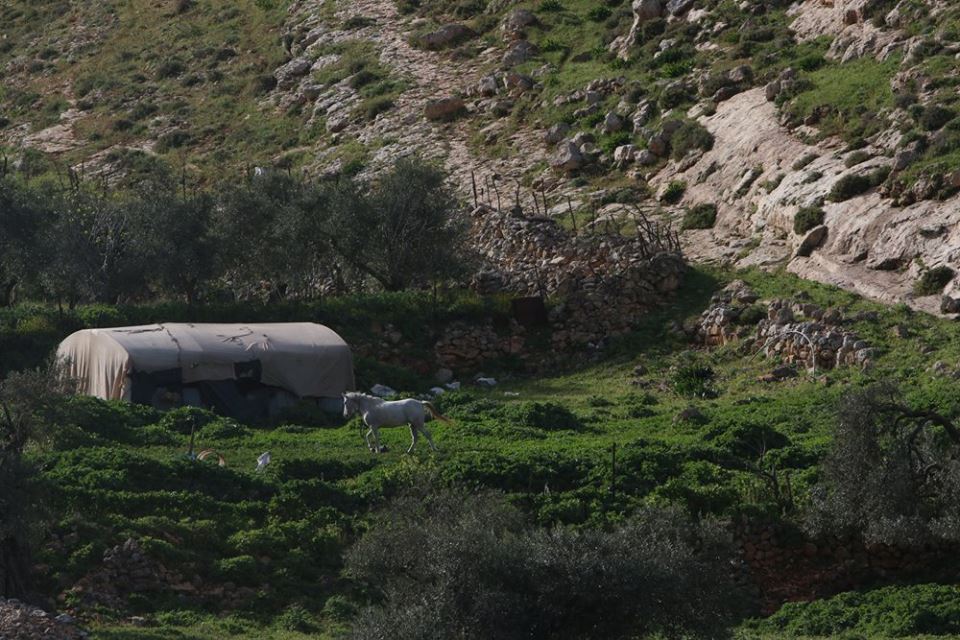
Jumana Emil Abboud and Issa Freij, Maskouneh (Inhabited), 2017. Video still. Courtesy of the artistsry.
This art work reflects the theme of "Be-Longing"
|
Be-Longing
During the First Intifada (1987-1990s), numerous artists moved away from
working in oil painting and began experimentation with natural materials, many
artists were engaged in attempting to find new forms of expression outside the
classical mediums of their training. This venture was also linked with the decision
to depart from use of materials imported from Israel as part of a wider popular
movement of disengagement with the occupation, its economy and institutions.
The former dreamscapes were not represented through the imaginary pictorial
field of the painting but through a sensory intoxication with the tactility and
the aroma of homeland which artists created with the use of natural materials
such as mud, earth, cactus, olive leaves, olive oil, clay, henna, herbs, olive oil soap,
oranges and water – all of which permeated their art in paintings, mixed-media
works and installations which continued into the 1990s and beyond. Artists such
as Sliman Mansour, Tayseer Barakat, Vera Tamari, Nabil Anani, Rana Bishara,
Nasser Soumi and others all experimented with natural materials. For example,
Tayseer Barakat worked with wood and found objects, in Untitled, the surface of
the wood has been engraved with abstract forms of people and animals, the work
imparts the sense of an ancient hieroglyph or tablet, referencing visual traditions
of the region and suggests that it is an ancient relic, while Nabil Anani’s work is
made of dyed leather shows a village scene.
Jifna by Sliman Mansour is an example, in which a utopic vision of the landscape
is not represented through idyllic pastoral images as in previous works but
more acutely through its appeal to our senses. The rich tactility of the works, the
encrusted surfaces, the areas of scintillating colours resemble the effect of the
passage of sunlight and shadow on stone and soil, and the feeling of warmth and
heat that transpires through the work call to a nostalgia for the landscape.
In Maskouneh (inhabited), by Jumana Emil Abboud, with Issa Freij, Abboud
speaks of longing and belonging, and of a profound, continual wandering and
searching in the landscape. This theme of rediscovering a relationship to the
landscape resonates in her the videos, drawings and paintings. In her drawings,
landscape and figures merge into one—female figures, ghouls, creatures. Her
works impart to us what it feels like to move through the landscape—to pause
to engage in intimacy and wonderment—yet they also seem to be imbued with
a sense of longing. In the book On Love and Other Landscapes, Yazan Khalili
juxtaposes a series of photographs of the landscape, with an intimate love story.
The photographs take us on journey across hills, valleys, vistas and everyday
places while we read of separation and memories of a relationship, which unfolds
with the turning of each page. As we move across the landscape, the personal
details of love story are revealed which convey a pervading sense of separation
and lost love.
|